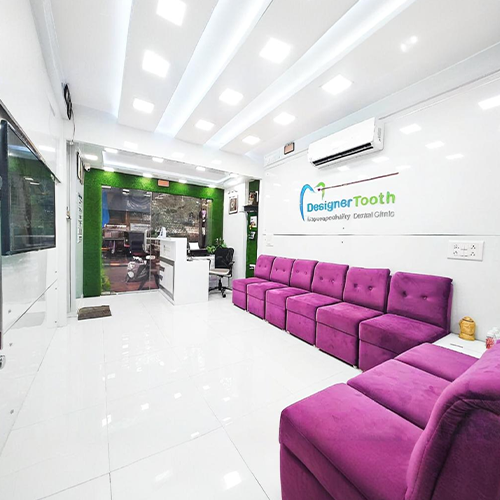Makeup Artistry
Makeup Artistry
Dental Braces: Straighten Your Smile
Dental braces are orthodontic devices used to correct misaligned teeth and jaws, giving you a straighter smile and improving overall oral health. Braces work by applying gentle pressure over time to move teeth into the correct position. They’re commonly used by both children and adults to address issues like crooked teeth, gaps, overbites, and underbites.
Why Get Dental Braces?
Braces are recommended for several reasons, including:
- Crooked or Crowded Teeth: When teeth overlap or are misaligned.
- Gaps Between Teeth: Large spaces or uneven spacing.
- Bite Problems: Such as overbite, underbite, or crossbite.
- Jaw Misalignment: When the jaws don’t align properly, causing discomfort or difficulty chewing.
Types of Dental Braces
Metal Braces (Traditional Braces)
These are the most common type, made from high-grade stainless steel brackets and wires. Metal braces are effective for treating complex cases and can be personalized with colored elastics for a fun look.Ceramic Braces
Ceramic braces work like metal braces but are made from tooth-colored materials, making them less noticeable. They are a more aesthetic option but may be more fragile than metal braces.Lingual Braces
Lingual braces are placed on the back side (tongue side) of your teeth, making them invisible from the front. They function like traditional braces but are hidden from view. However, they may take longer to get used to and can be more difficult to clean.Clear Aligners (Invisalign)
These are a popular alternative to traditional braces. Clear aligners are removable, virtually invisible trays that gradually shift teeth into place. They are a discreet option but may not be suitable for more severe orthodontic issues.
How Braces Work
Braces consist of small brackets attached to the teeth and connected by an archwire. Over time, the archwire is adjusted to gently guide the teeth into proper alignment. The process can take anywhere from 1 to 3 years, depending on the severity of the case.
The Process of Getting Braces
Initial Consultation
Your orthodontist will examine your teeth and jaws, take X-rays, and possibly make a mold of your teeth to determine the best course of treatment.Placement of Braces
During the initial appointment, the orthodontist will bond the brackets to your teeth and thread the archwire through them. Elastics or bands may be added for additional support.Regular Adjustments
Every 4-6 weeks, you’ll visit your orthodontist to have your braces tightened or adjusted. This helps move the teeth gradually and ensures your treatment is progressing as planned.Retainer
Once the braces are removed, you’ll need to wear a retainer to maintain your new smile. This prevents teeth from shifting back into their original position.
Benefits of Dental Braces
- Improved Appearance: A straighter smile can boost confidence and self-esteem.
- Better Oral Health: Properly aligned teeth are easier to clean, reducing the risk of tooth decay, gum disease, and other dental issues.
- Corrected Bite: Braces help address bite problems, which can prevent discomfort and wear on the teeth.
- Long-term Results: Once treatment is complete, you’ll enjoy long-lasting results with proper care.
Caring for Your Braces
Maintaining good oral hygiene is crucial when you have braces to avoid issues like plaque buildup and staining. Here’s how you can take care of your braces:
- Brush After Every Meal: Food can easily get stuck in braces, so brushing after eating helps keep your teeth and braces clean.
- Floss Daily: Use special floss threaders or orthodontic floss to clean between your teeth and around the braces.
- Avoid Certain Foods: Sticky, hard, or chewy foods (like gum, popcorn, and hard candies) can damage your braces.
- Regular Dental Visits: Continue to see your dentist for checkups and cleanings to maintain your oral health during treatment.
Are Braces Painful?
You may experience some discomfort, especially after adjustments. This is normal as your teeth are moving, but the soreness typically goes away after a few days. Your orthodontist may recommend over-the-counter pain relievers to manage any discomfort.
How Long Will You Need to Wear Braces?
The duration of treatment varies depending on the complexity of your case. On average, most people wear braces for 1-3 years. Afterward, wearing a retainer is essential to keep your teeth in their new position.
Conclusion
Dental braces are an effective way to achieve a straight, healthy smile, improving both function and aesthetics. With various options available, from traditional metal braces to nearly invisible clear aligners, orthodontic treatment is more convenient and customizable than ever. Whether you’re correcting crooked teeth or addressing bite issues, braces can give you the confidence to smile freely and maintain better oral health for life.
Best Hospitals for Cardiology Surgical Oncology in India
Fill this form to get a free quote from best hospitals in India


At MediTours India, we stand as a distinguished leader in the realm of medical tourism, dedicated to transforming your healthcare journey into a seamless and transformative experience. With a commitment to excellence and a focus on your well-being, we pave the way for a new era of medical travel.
Contact Us
Address : C603 Jalaram Park LBS Road. Bhandup West Mumbai -400078 Phone : +91 9820344697 Email : ajit@meditoursindia.in
Copyright by indiameditours 2023. All rights reserved.








































